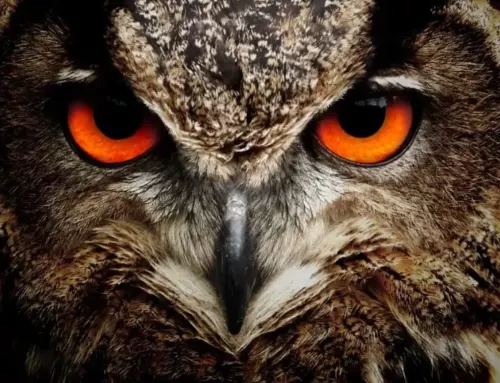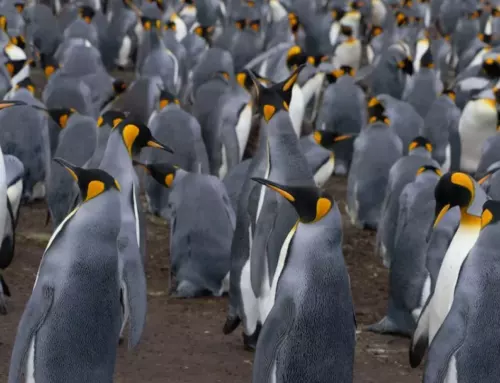From dull to bright, light to dark, and everywhere in between Yellow is a color that a lot of bird feathers have.
This article looks at 15 different kinds of yellow birds that live in North America. This list has a lot of different kinds of yellow birds, from those that eat bugs to those that eat seeds and come to your bird feeder often.
Here Are the Types of Yellow Birds
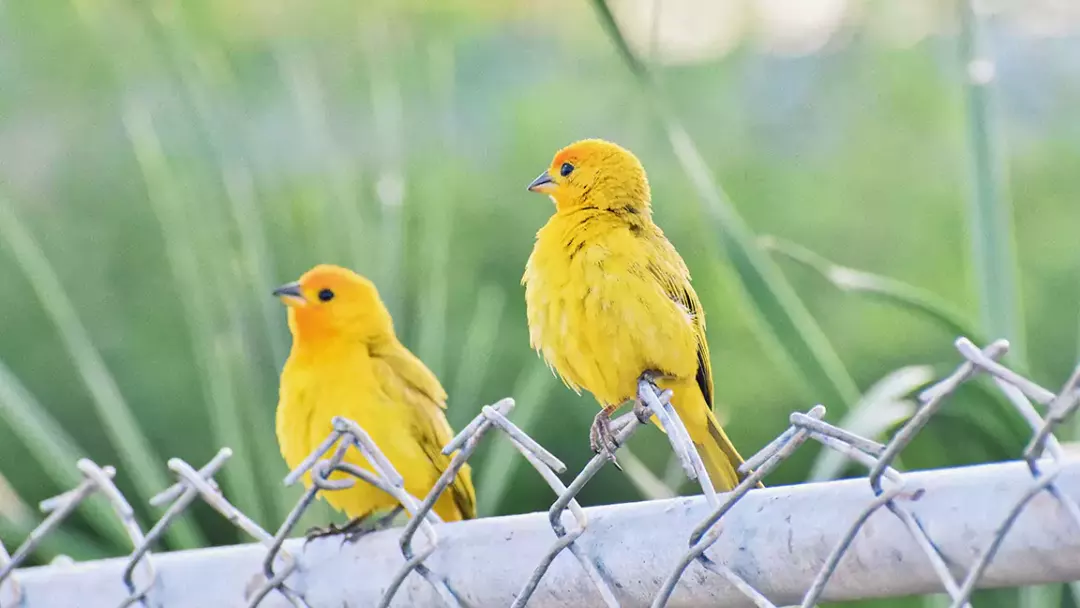
There are so many yellow birds that we couldn’t list them all year. So, BetterPetsLife picked 15 of our favorites from a wide range of bird species and groups. Some types of yellow birds, like flycatchers, kingbirds, warblers, orioles, and tanagers, have a lot of yellow in their coloring.
Western Tanager
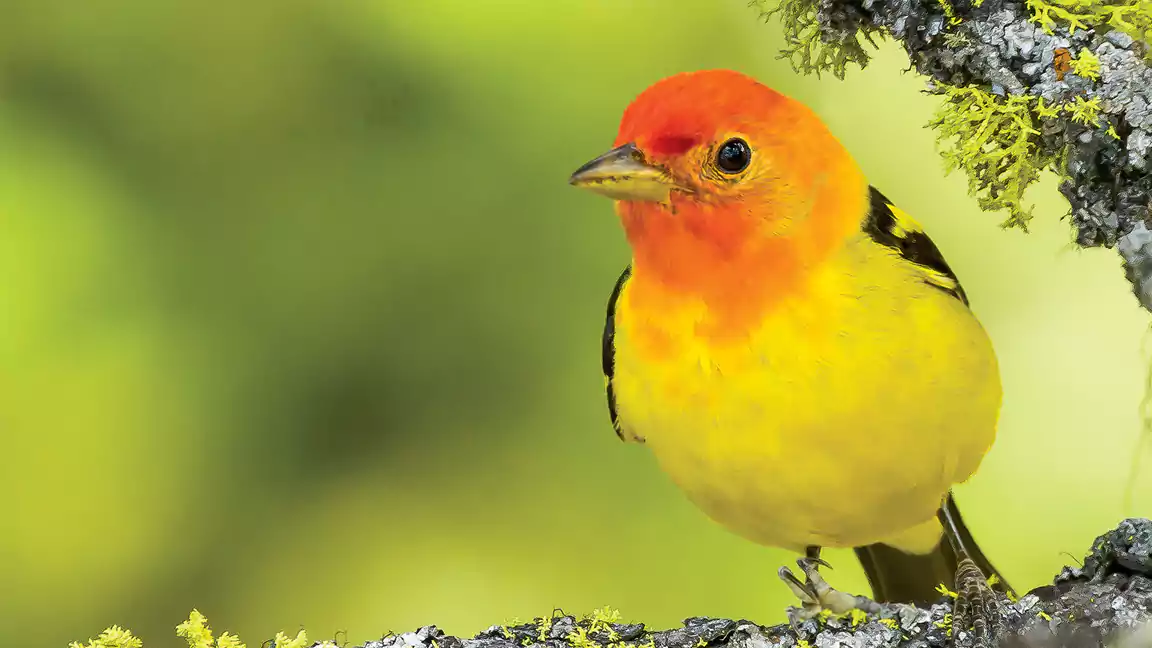
It’s hard to miss the Western Tanager. Males small yellow birds have heads that look like flames and yellow bellies, necks, and tails. Females are paler and don’t have fiery heads. They eat insects, nectar from flowers, and fruit. These tanagers travel a long way from Central America and Mexico, where they spend the winter, to the western United States and Canada, where they breed during the summer.
Backyards and suburban settings may attract Western Tanagers by growing fruiting shrubs and trees, flowers that provide nectar, and by providing nectar feeders. They are one of Canada’s brightest summertime birds. Their calls are like those of robins, so don’t miss them.
American Goldfinch
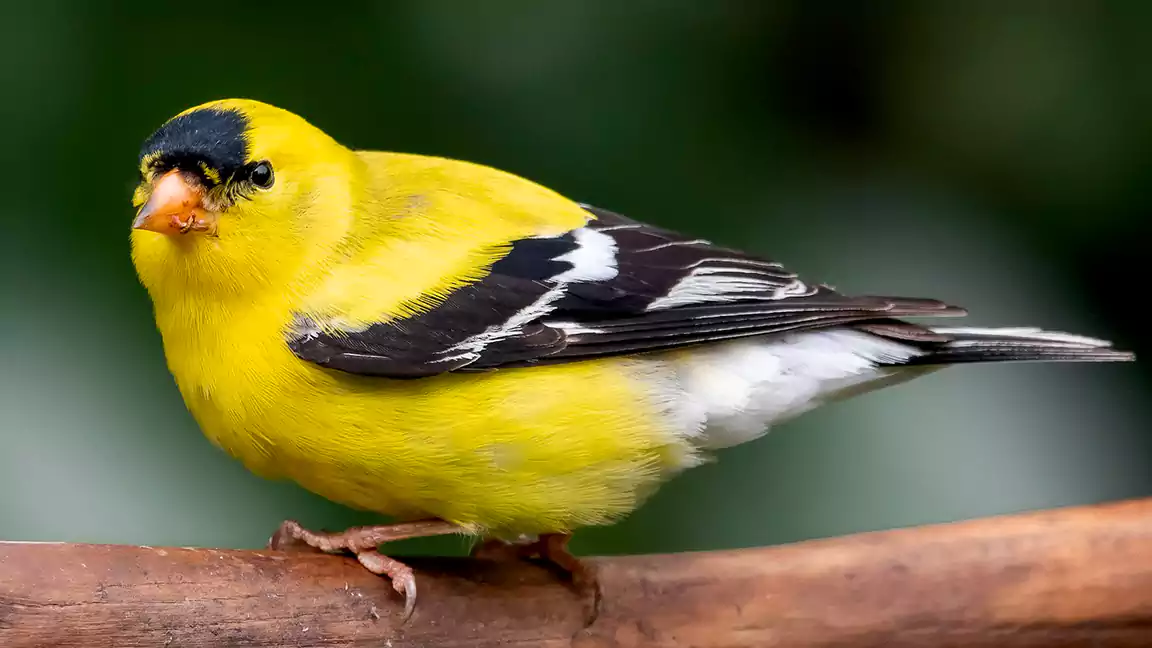
The American Goldfinch, one of the most recognizable small yellow bird in the country, is a seed eater that will frequent your garden bird feeders. Keep an eye out for the male’s brilliant yellow bird with black wings and black crown, yellow and black bird . The females are more softly colored, having a yellow head and a body that is taupe and brown.
They fade to an olive-yellow throughout the winter months, only to reappear in full glory come April. They populate the whole United States, southern Canada, and the Gulf coast of Mexico.
Scott’s Oriole
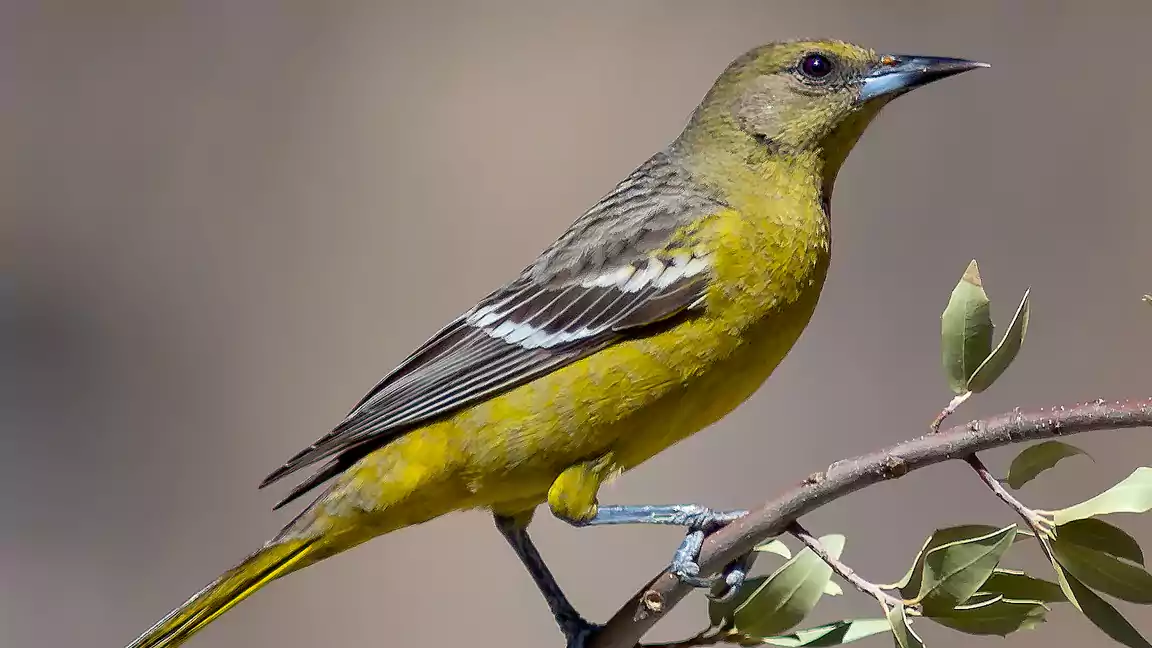
The dazzling Scott’s Oriole is a resident of the southwestern United States and Mexico. Nesting sites rich in yucca, pinyon pine, juniper, and agave are particularly attractive to them. Scott’s Orioles are master insect foragers that will go to great lengths, even doing acrobatics in the air, to reach the tiniest cracks and crevices.
They, like other oriole’s small yellow birds, will stop by your backyard feeder for some fruit, jelly, or nectar. The males of this species are mostly yellow with black heads and wings. In general, females have a drab yellow color, and their wings are grey.
Females of several species of oriole, including the Baltimore Oriole, Orchard Oriole, and Hooded Oriole, seem drab in comparison to the bright orange and black of the males.
Prairie Warbler
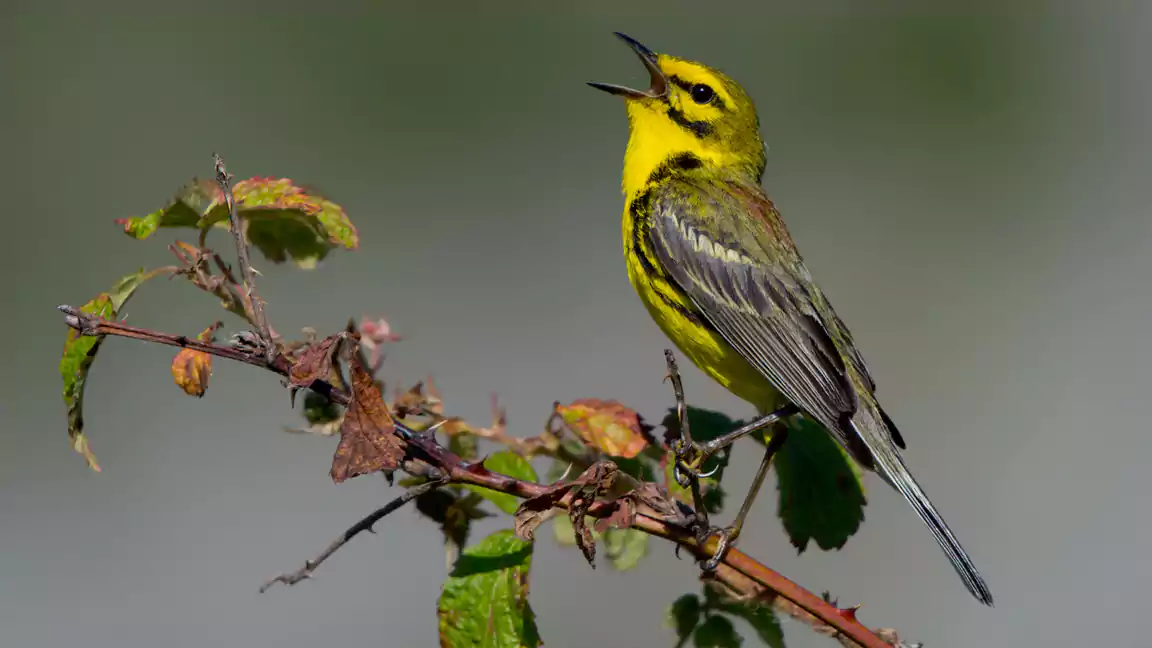
Despite its name, the Prairie Warbler does not really live on prairies. This yellow songbird, despite its misleading name, spends the summers in the southern United States in new forests and thick, impenetrable scrub. Florida is home to a diverse population that stays there throughout the year.
An adult Prairie Warbler’s head, throat, and underside are all a bright yellow. Males may be identified by the two prominent black stripes that go over their eyes. Females have softer, more subdued coloration, with grey eye stripes and dusky grey wings. Males small yellow bird may have several mates, but they care for their offspring regardless of how many there are.
Meadowlarks (Eastern & Western)
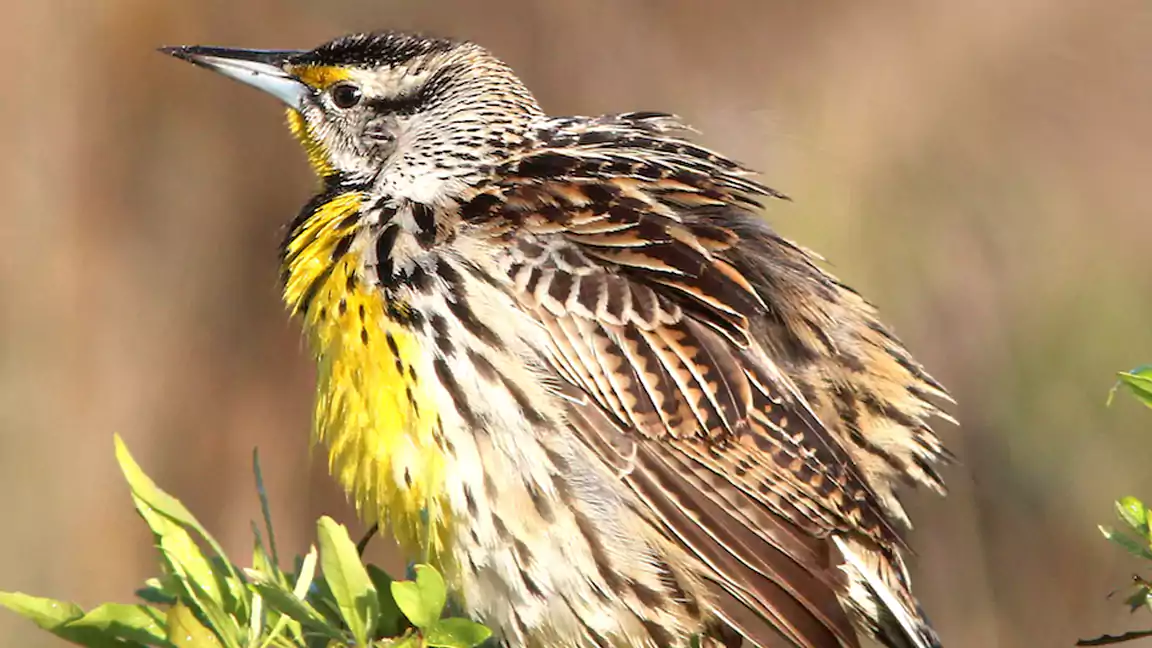
The back of a meadowlark is spotted with grey and brown, while the face, neck, and belly are a brilliant shade of yellow. Despite their superficial similarity, the Mississippi River effectively divides the Eastern Meadowlark and Western Meadowlark into two separate species. Open areas like as grasslands, pastures, and vacant fields are ideal for both species’ nesting, foraging, and living needs. They often perform their songs while perched on fence poles.
Their distinctive songs help to identify each species. The Western Meadowlark’s song is deep and full, sounding like a bubbling brook, with a wide range of tones. The songs of the Eastern Meadowlark sound like a crisp whistle, devoid of any gurgling. They can reach a higher pitch and sing a broader repertoire of music.
Yellow Warbler
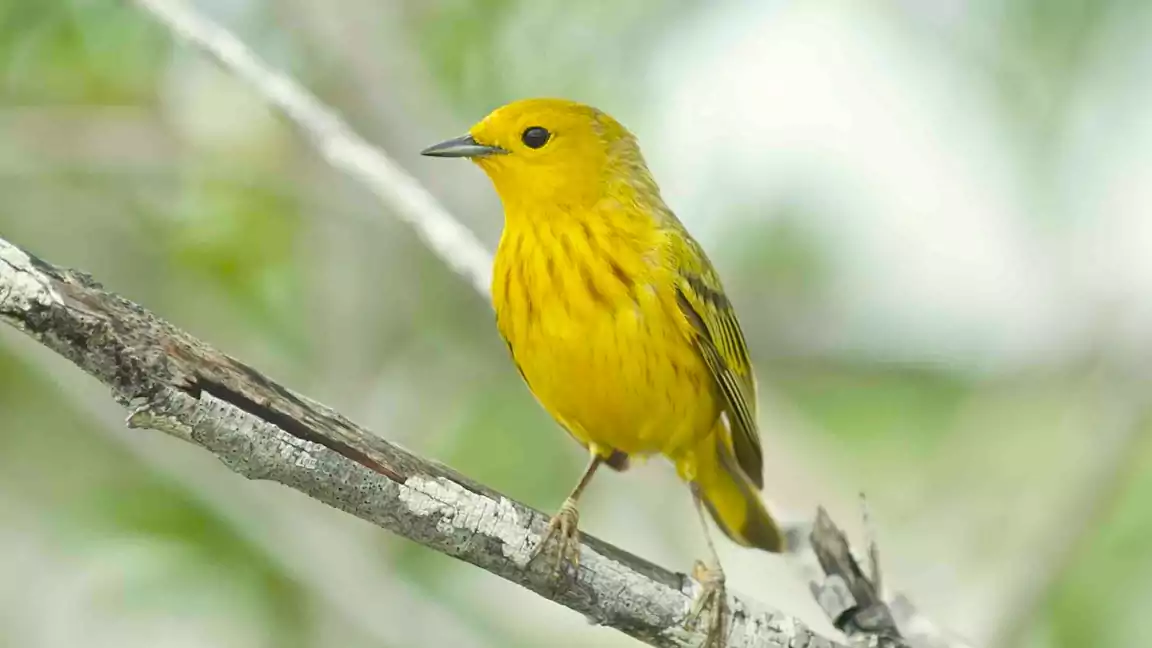
During the summer, the Yellow Warbler may be found all across the northern half of the United States and throughout much of Canada. Each one has a single spherical black eye and a golden body which are yellow and black bird. Men often have rusty stains on their chests. Naturally insectivorous, caterpillars are their go-to meal. Edge environments, such as thickets near streams, gardens, and swamps, are ideal for yellow warblers.
Their nests are exposed, making them easier to see, and cowbirds often invade and parasitize them. To deal with these unwanted visitors, Yellow Warblers simply lay additional eggs on top of the invader egg and then construct a new floor over it. For little under two weeks, both parents work together to care for the chicks.
Black-Throated Green Warbler

Another species of warbler that is at home in evergreen woods is the Black-throated Green Warbler. The coniferous woods of southeastern Canada and the American Northeast are home to these insectivorous birds. Caterpillars are a favored snack, while berries are a winter staple.
Nests are constructed collaboratively by males and females using plant materials. A tree house is a sturdy dwelling that is often built into the crook of a limb adjacent to the tree’s trunk. Each parent is responsible for one-half of the chicks’ care.
Western Kingbird
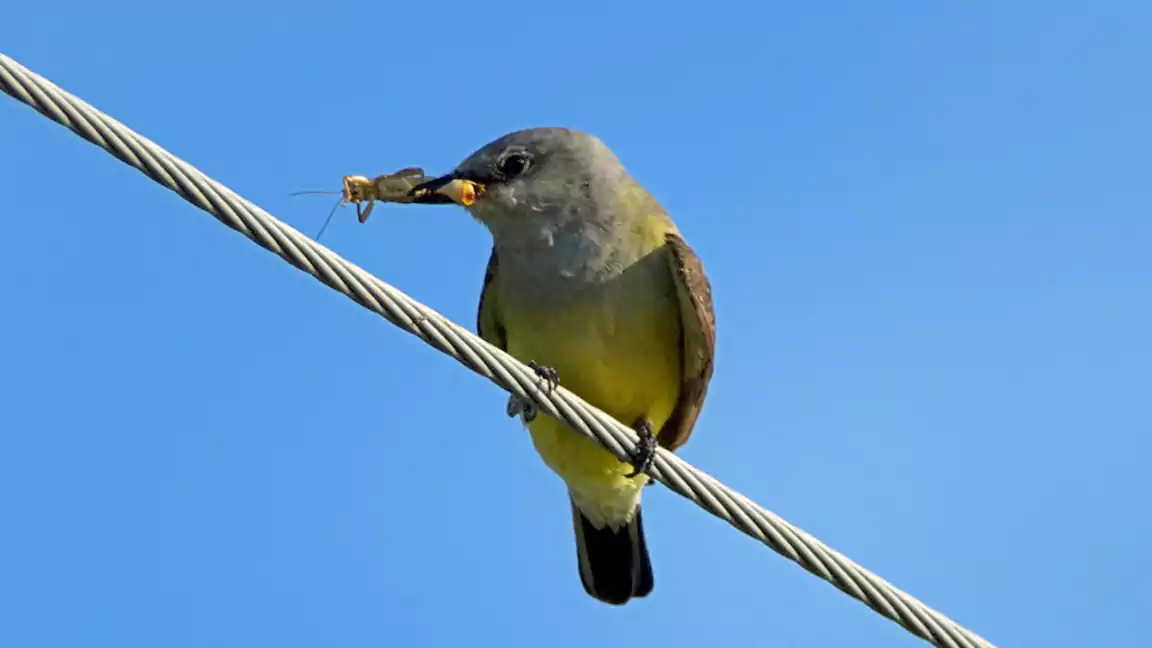
As its name suggests, the Western Kingbird is more prevalent in the western United States. It’s easy to spot a flock of these flycatchers because of how outgoing and confident they are. The birds wait for their bug meal to come to them while perched on fences or shrubs.
They look like robins in outline but have quite distinct plumage. The Western Kingbird is distinguished by its bright yellow underbelly and flight feathers. They may have a yellowish-green wash on their top backs, grey heads, and brown wings.
Many different species of flycatchers may be found across North America. They are overwhelmingly uniform in appearance, with grey and brown bodies and brilliant yellow chests and bellies. Several species of flycatchers come to mind, including the Nutting’s Flycatcher, Ash-throated Flycatcher, Yucatan Flycatcher, Great Crested Flycatcher, and Brown-crested Flycatcher.
The Western kingbird has a remarkable capacity for adapting to man-made environments. They raise their young in busy, bustling cities, where there is a lot of traffic and noise, and they nest in the crevices of telephone poles.
Blue-Winged Warbler

The Blue-winged Warbler is nearly totally yellow, despite its name, which comes from the little blue tint of its otherwise mainly grey wings A blue-winged warbler has a yellow head, chest, abdomen, and underside, making it one of the most colorful warblers in North America.
Specifically in Ohio, Pennsylvania, and western Kentucky, these warblers may be found in successful field environments. The female constructs the cone-shaped nest by weaving together twigs, leaves, and animal hair.
Evening Grosbeak
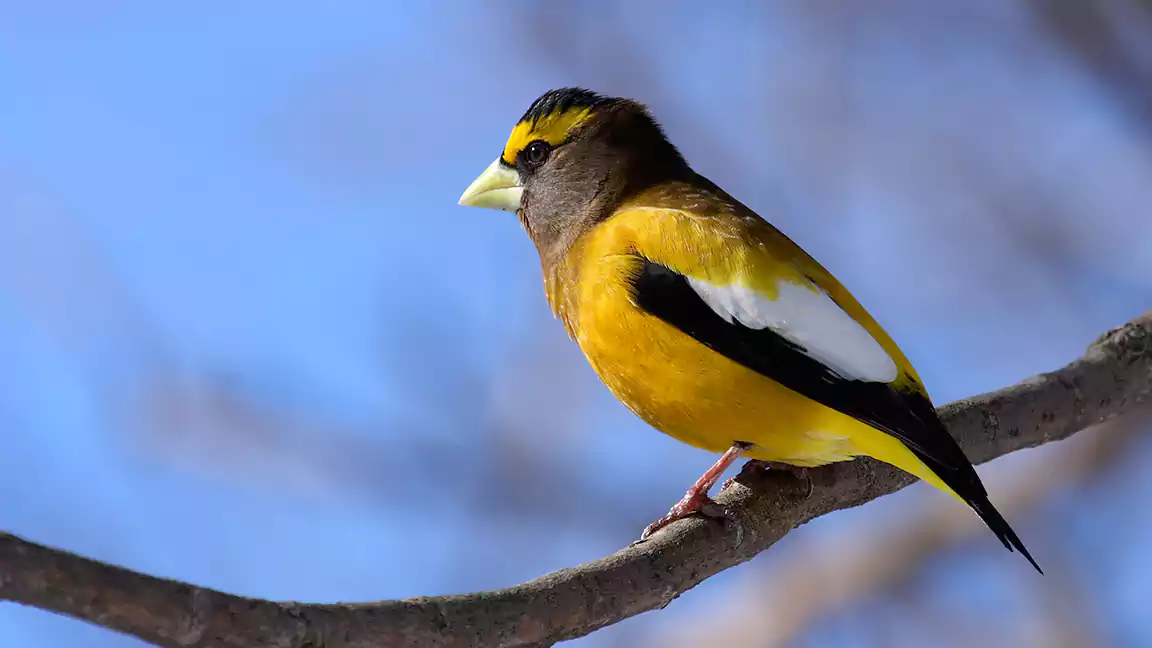
This noisy, social finch will most likely visit your feeder during the colder months. Typically, you’ll find these Grosbeaks in Canada and the far northern parts of the United States. Put out some sunflower seeds, the Evening Grosbeak’s preferred food, to lure it into your yard. These birds have powerful beaks and can readily split open thick seeds, so there’s no need to restrict them to little ones.
Keep a watch out for the golden patch that sits atop its head, between its eyes and beak. It has a dark brown head, while its back, abdomen, and underbelly are bright yellow. However, whereas the males are a brilliant yellow, the ladies are a more subdued grey with a hint of yellow.
Summer Tanager
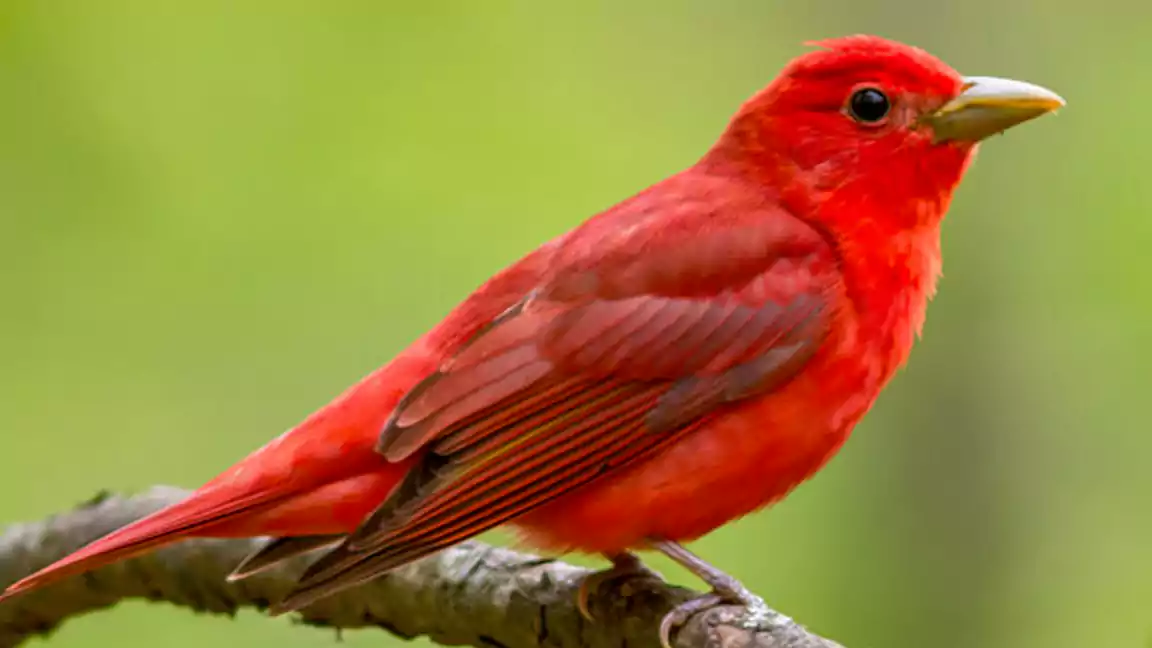
The male Summer Tanager is a red bird, whereas the female is a bright yellow. Bees, wasps, cicadas, grasshoppers, and beetles are among the many insects that this species enjoys eating. Tanagers also like eating fruit, especially berries, and bananas.
You may see Summer Tanagers throughout the southwestern United States (namely in California, Arizona, and New Mexico) and in the eastern United States south of the Great Lakes.
Many other North American tanagers, such as the Hepatic Tanager, Scarlet Tanager, Flame-colored Tanager, and Red-throated Ant-Tanager, also exhibit sexual dimorphism in which males are red and females are yellow.
Eastern Yellow Wagtail

The Eastern Yellow Wagtail, a bird endemic to northern Alaska, is a fast walker that does much of its foraging on the ground. It mostly feeds on insects it catches in the water, although it may sometimes leap after airborne insects. They prefer habitats close to bodies of water since that is where they can most easily get plentiful supplies of insect prey.
Bird species in the Eastern Yellow Wagtail family nest on the ground. The female constructs the nest all by herself and then attempts to conceal it with nearby bushes. Grass, lichen, and moss are the typical materials used to create this. feathers or another soft stuff line the inside.
Prothonotary Warbler

The Prothonotary Warbler is another example of a warbler with a lot of eye-catching yellow coloring. Males and females look similar, with a yellow head and body and grey wings. These warblers may be seen throughout the summer in the southern United States before they migrate to warmer climates for the winter.
Prothonotary Warblers enjoy wet environments, so look for them in forested swamps, flooded forests, and woodlands near streams, lakes, and rivers. This species of warbler is unusual in that it prefers to nest in tree cavities, often making use of existing holes previously used by other species, such as chickadees and woodpeckers.
Yellow Tailed Oriole
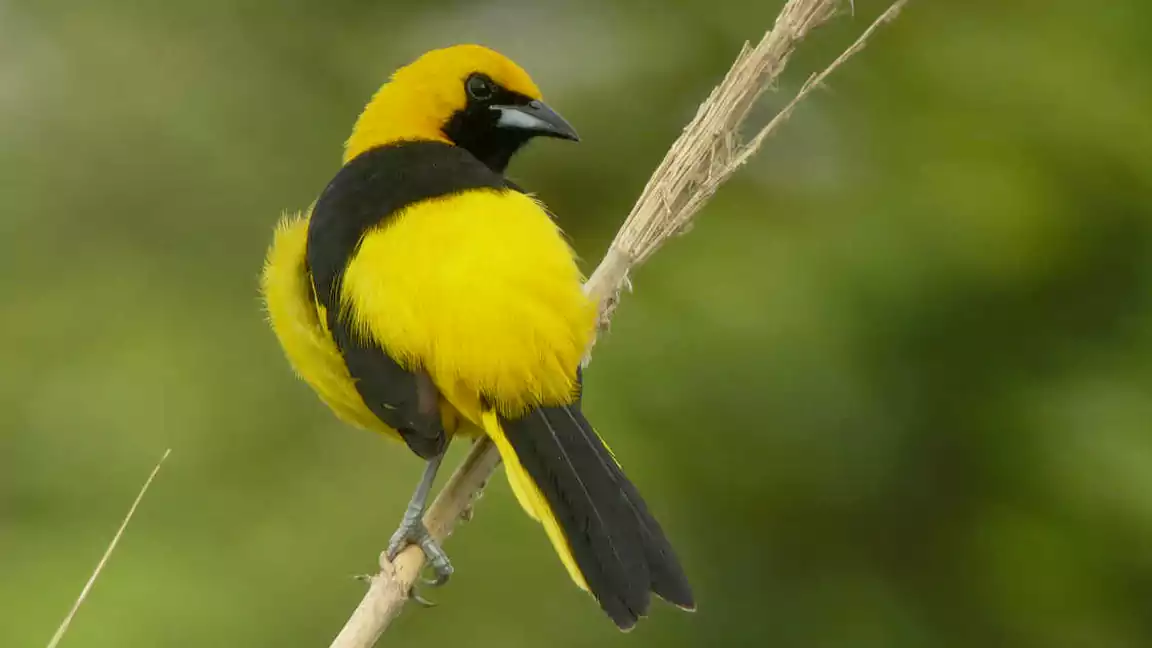
Unlike other oriole species, we are accustomed to seeing in the U.S. where the sexes seem substantially different, both male and female Yellow-tailed Orioles exhibit the same plumage. They feature a bright yellow body and “hood,” a black face, and yellow bird with black wings.
This species is split into four regionally distinct subspecies. The sole North American subspecies, I.m.mesomelas, is confined to Mexico’s southern states and the Yucatan Peninsula.
Yellow Throated Vireo
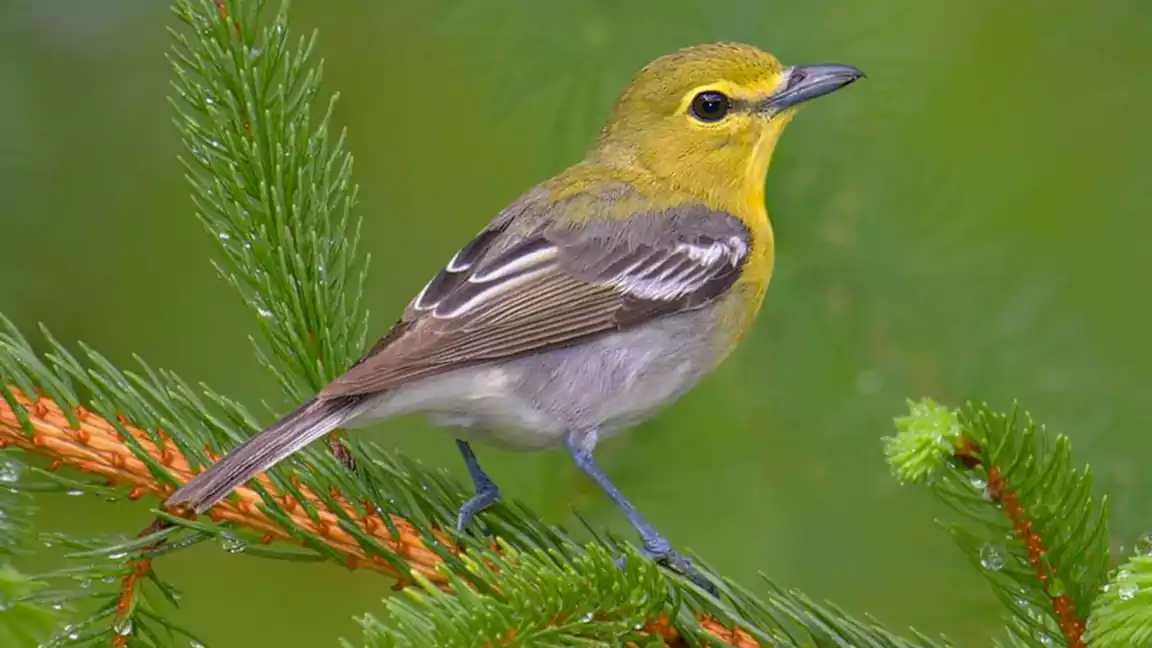
The Yellow-throated Vireo is a lovely songbird that favors shady woodland settings and regions near roadsides or streams. They like to raise their young under oak trees due to the abundance of foliage that serves as the perfect camouflage. Its brilliant yellow coloring belies its extreme shyness, making it difficult to identify.
In order to protect their territory from competing males, male Yellow-throated vireos sing loudly and persistently throughout the mating season. The nest is constructed by both the male and female and is hidden from view by moss and grass. During the spring and summer, you may see these vireos in the eastern portion of the United States.

